Adolescent Medication Monitoring Calculator
Treatment Monitoring Guide
This tool helps determine appropriate monitoring frequency based on treatment phase and risk factors. Following FDA and AACAP guidelines is critical for adolescent psychiatric medication safety.
When a teen starts a psychotropic drug, the biggest question for every clinician is simple: adolescent psychiatric medication can help, but how do we make sure it doesn't spark suicidal thoughts?
Why the focus on suicide risk?
Suicidal ideation is a well‑documented adverse effect of many psychiatric drugs, especially during the first few weeks of treatment. The U.S. Food and Drug Administration (FDA) slapped a black‑box warning on all antidepressants in 2004 and refreshed it in 2007, stating that children, adolescents, and young adults up to age 24 face an elevated risk of suicidal thinking and behavior.
Since then, professional bodies like the American Academy of Child and Adolescent Psychiatry (AACAP) have built detailed monitoring recommendations. Ignoring them can lead to missed warning signs, delayed interventions, and, tragically, preventable tragedies.
Regulatory backdrop you need to know
- FDA black‑box warning (2004/2007): Requires explicit labeling about suicidal risk for antidepressants and urges clinicians to monitor closely.
- AACAP 2015 Psychotropic Medication Recommendations: Calls for ongoing awareness of side effects, with a specific focus on suicidal thoughts throughout treatment.
- State guidelines: California (2022), New York City (2023), Oklahoma (2022), and others spell out concrete visit frequencies and documentation steps.
Understanding the hierarchy - federal, national professional, state - helps you align your practice with the most stringent requirements, which is always the safest route.
Core components of a monitoring plan
- Baseline assessment: Before the first dose, capture the teen’s current suicidal ideation level, past attempts, family history, and any substance use. Use a validated tool like the Columbia‑Suicide Severity Rating Scale (C‑SSRS).
- Initial intensive phase: For the first 2-4 weeks, schedule weekly check‑ins (in‑person or telehealth) that include:
- Direct question about thoughts of self‑harm
- Review of side‑effects and perceived benefits
- Collateral input from parents, teachers, or school counselors
- Stabilization phase: If no new suicidal thoughts emerge, shift to bi‑weekly visits for the next 2 months, then monthly thereafter, adjusting based on risk factors.
- Discontinuation monitoring: When tapering or stopping a drug, increase visit frequency again (often weekly) because withdrawal or relapse can reignite suicidal thinking.
- Documentation: Every visit must note the exact question asked, the teen’s response, and any plan changes. California’s 2022 guidelines demand a written justification for any dose adjustment tied to suicidal risk.
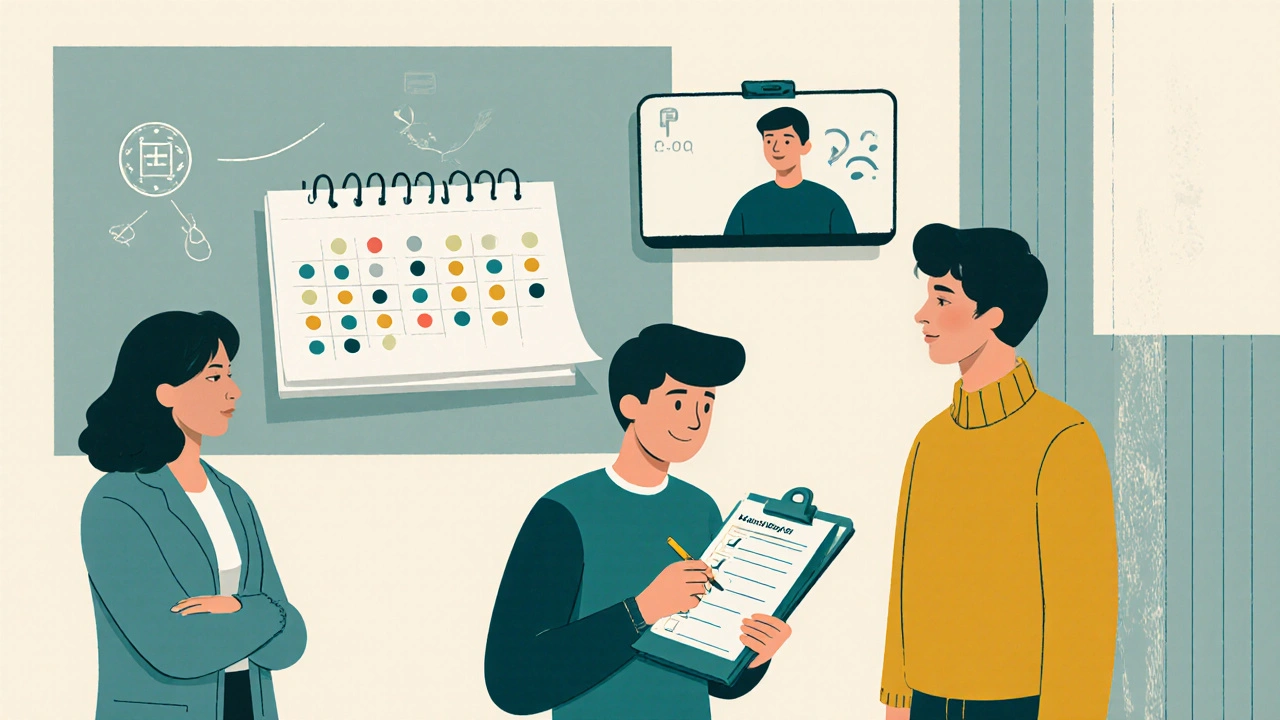
Practical steps for clinicians
Turning guidelines into daily habit is easier when you have a concrete checklist.
| Phase | Typical Visit Frequency | Key Focus |
|---|---|---|
| Baseline & Initiation (0‑4 weeks) | Weekly | Suicidal ideation, side‑effects, therapeutic benefit |
| Stabilization (5‑12 weeks) | Bi‑weekly | Maintain benefit, watch for delayed emergence of thoughts |
| Maintenance (≥13 weeks) | Monthly | Long‑term safety, dose optimization |
| Discontinuation/Taper | Weekly (or more if high risk) | Withdrawal symptoms, relapse, suicide risk |
Adjust the schedule if the teen shows any warning signs: sudden mood swings, new hopeless statements, or increased substance use.
Tools that make monitoring less painful
Electronic health records (EHR) now offer suicide‑risk templates that automatically flag missed questions. As of 2022, about 38 % of child‑psychiatry practices use such tools, but only 19 % have modules that tie the risk directly to medication changes. When choosing a system, look for:
- Integration with the C‑SSRS or PHQ‑9 for teens
- Automated alerts for missed weekly visits
- Secure messaging that lets parents or school counselors report concerns between appointments
Even a simple spreadsheet can work if you standardize fields: date, dose, side‑effects, suicidal ideation (yes/no), and next‑visit plan.
Common barriers and how to overcome them
1. Training gaps: Only about a third of psychiatry residents receive the recommended eight hours of suicide‑risk training. Solution - schedule quarterly in‑service sessions using AACAP’s online modules.
2. Coordination with schools: A 2022 survey showed 68 % of clinicians struggle to share monitoring data with school staff. Solution - obtain consent early and use encrypted portals that let school counselors log observations.
3. Parental consent confusion: Many families don’t grasp the black‑box warning. Solution - create a one‑page handout that explains the warning in plain language and outlines the monitoring schedule.
Future directions
Research funded by the National Institute of Mental Health is racing to identify biomarkers that predict medication‑induced suicidal thoughts. While still experimental, early studies suggest that certain inflammatory markers and genetic profiles could flag high‑risk teens before the first dose.
Digital therapeutics are also evolving. Apps that deliver daily mood check‑ins, paired with algorithmic risk scoring, are being piloted in several California clinics. If these tools prove reliable, the weekly in‑person visit might become a safety net rather than the primary monitor.
Quick checklist for today’s practice
- Obtain a documented baseline suicide risk assessment.
- Schedule weekly visits for the first month.
- Use a validated scale (C‑SSRS, PHQ‑9) at every appointment.
- Document the teen’s own view on medication efficacy.
- Plan for increased frequency during any dose change or taper.
- Secure informed consent that explicitly mentions suicide risk.
- Set up a simple electronic log or EHR template to track all data.
How often should I ask a teen about suicidal thoughts?
During the first 4 weeks after starting or changing a medication, ask at every visit - typically weekly. If the teen remains stable, you can stretch to every two weeks for the next 2 months, then monthly. Increase frequency again when tapering or if any warning signs appear.
Do all psychotropic drugs require suicide monitoring?
Yes. While the FDA black‑box warning officially covers antidepressants, most professional guidelines (AACAP, state policies) extend monitoring to antipsychotics, mood stabilizers, and stimulants because any brain‑active drug can affect mood.
What documentation is required by California law?
Clinicians must record the teen’s reported suicidal ideation, the rationale for any dose change, the teen’s perspective on benefit, and a written plan for tapering or continuation. The record must be signed by both the prescriber and a parent/guardian.
How can I involve school staff without breaching confidentiality?
Secure written consent from the teen and parents to share specific safety information. Use a HIPAA‑compliant portal where school counselors can log observations that you can review at your next visit.
Are there digital tools that track medication‑related suicide risk?
A growing number of EHR add‑ons and stand‑alone apps include suicide‑risk modules tied to medication changes. Look for platforms that integrate the C‑SSRS and send automatic alerts when a teen reports worsening ideation.
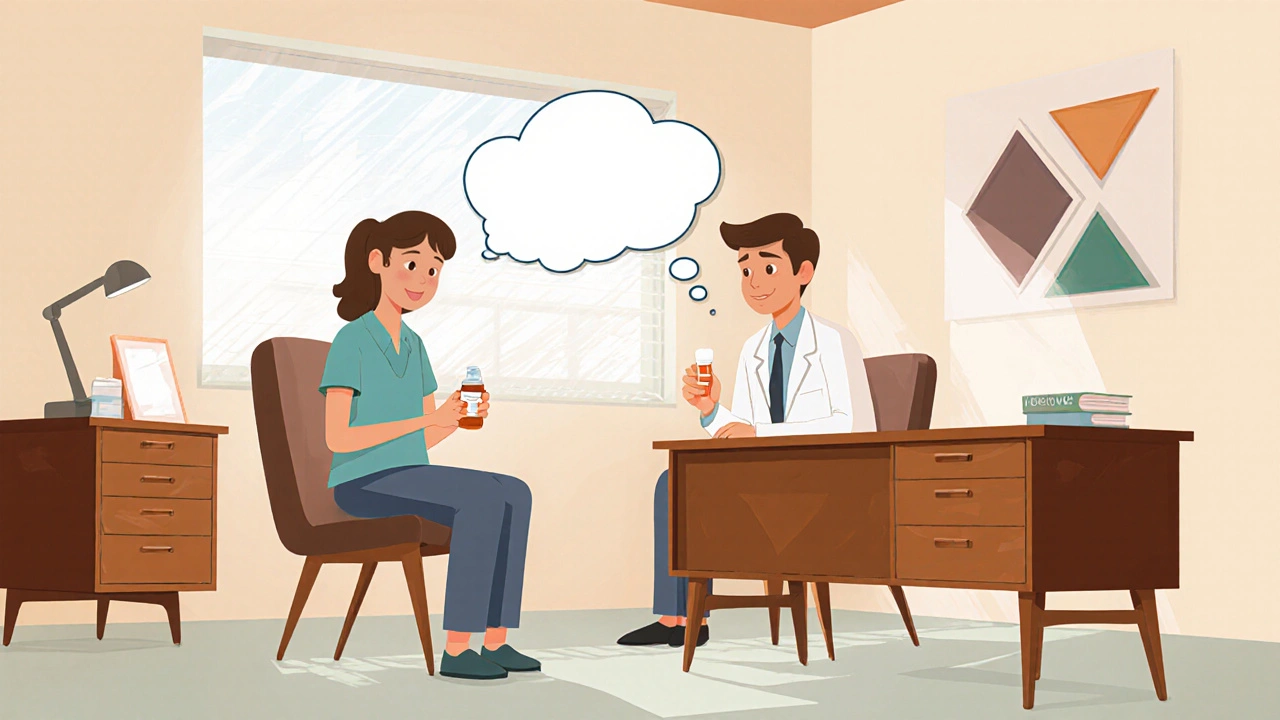



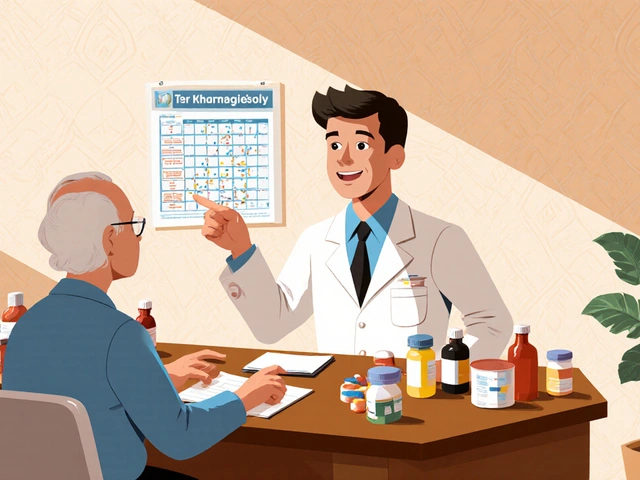
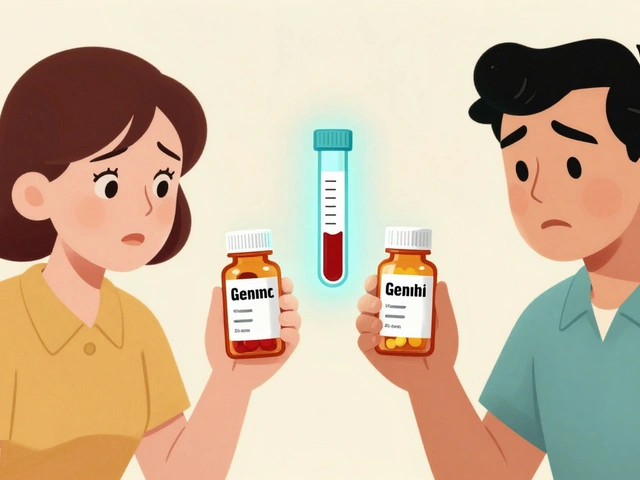
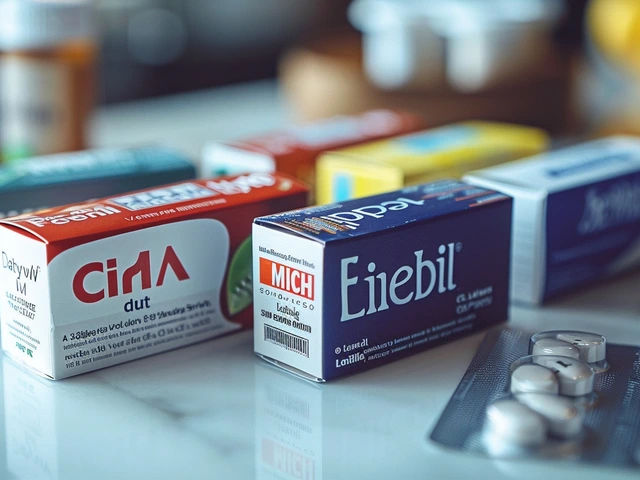
Lennox Anoff
25 October 2025 - 12:58 PM
It is an abhorrent travesty that any clinician would dare to sidestep the rigorously codified monitoring protocols outlined by the FDA and AACAP. The sanctity of adolescent mental health demands that we treat these guidelines not as suggestions but as inviolable commandments. One cannot simply rely on intuition when a teenager's life hangs in the balance; the black‑box warning exists for a reason. Moreover, the bureaucratic inertia of many practices is a symptom of deeper ethical decay, where profit eclipses prudence. Therefore, every prescriber must embed the Columbia‑Suicide Severity Rating Scale into each encounter, documenting verbatim the teen’s response, lest we be complicit in avoidable tragedy.
Charlie Stillwell
30 October 2025 - 22:53 PM
Your rant is as empty as your emoji usage 😡.
Ken Dany Poquiz Bocanegra
5 November 2025 - 09:47 AM
Solid overview-especially the emphasis on weekly check‑ins during the initiation phase, which aligns with best‑practice standards.
Buddy Bryan
10 November 2025 - 20:42 PM
Remember to integrate collateral information from school counselors into the C‑SSRS documentation; without that triangulation you’re missing half the data. Also, schedule a brief 10‑minute telehealth “pulse check” mid‑week to catch any emergent ideation that might slip between visits. Finally, flag any dosage adjustment in the EHR with a mandatory “suicide risk reassessment” field to satisfy state compliance.
Jonah O
16 November 2025 - 07:36 AM
What the mainstream psychiatric community refuses to acknowledge is that the push for relentless monitoring is less about patient safety and more about protecting the pharmaceutical bottom line. Every new antidepressant that hits the market comes packaged with a glossy black‑box warning, a legal shield that insulates manufacturers from liability while simultaneously creating a market for “monitoring services” that line the pockets of clinicians and tech vendors. The data presented in most FDA summaries are cherry‑picked, omitting thousands of adverse events that never make it past the initial press release. Moreover, the so‑called “state guidelines” are often drafted by committees populated with industry consultants whose salaries depend on the very drugs being prescribed. Teens are caught in the crossfire, and parents are fed a steady diet of fear‑based pamphlets that disguise profit motives as public health alerts. Add to that the rise of digital “apps” that claim to predict suicidal ideation; many of these platforms are owned by the same conglomerates that manufacture the medications they’re supposed to monitor. It isn’t a coincidence that the algorithms prioritize alerts when a dose is increased, prompting physicians to schedule extra visits and bill additional fees. The myth of neutral science crumbles when you examine the flow of money: from pharma to lobbying groups, from lobbying groups to regulatory agencies, and finally to the clinical setting where the real cost is a teenager’s trust. While the FDA touts its independence, internal documents obtained through FOIA requests reveal a revolving door of personnel between the agency and drug companies. Even the validated scales like C‑SSRS have been subtly revised in recent editions to include language that favors more frequent assessments, which again translates to more billable encounters. When you peel back the layers, the narrative shifts from “protect the youth” to “protect the revenue streams.” The most alarming part is that this entire ecosystem thrives on secrecy; whistleblowers who have tried to expose these conflicts are often silenced with non‑disclosure agreements or legal threats. In short, the safety protocols we are urged to adopt are not purely altruistic-they are embedded in a commercial framework that benefits a select few. Recognizing this reality doesn’t mean abandoning monitoring altogether, but it does demand a critical eye on who profits from every additional appointment, every extra questionnaire, every new software license. Thus, clinicians must advocate for transparency and prioritize patient welfare above industry incentives.
Aaron Kuan
21 November 2025 - 18:31 PM
Sounds like a paranoid script, but the truth hurts.
Nathan Comstock
27 November 2025 - 05:25 AM
Let’s cut the honey‑talk: America’s best mental‑health outcomes hinge on strict adherence to these federally mandated protocols. Anything less is a betrayal of our youth and a surrender to foreign pharmaceutical interests that thrive on lax oversight. The data is crystal clear-when clinicians follow the weekly C‑SSRS schedule, suicidal incidents drop dramatically. So stop the whining and implement the checklist now.
Amber Lintner
2 December 2025 - 16:20 PM
Oh, what a surprise-another “one‑size‑fits‑all” checklist that pretends to solve a deeply personal crisis. Reality is messy, and no spreadsheet can capture the nuance of a teen’s internal battle.
the sagar
8 December 2025 - 03:14 AM
Don’t be fooled by the polished PDFs; they’re a front for a global agenda to medicate every teenager and control dissent. The “monitoring” is just data harvesting for a surveillance state. Wake up.
Grace Silver
13 December 2025 - 14:09 PM
It is fascinating how we equate frequency of check‑ins with safety yet ignore the deeper existential angst teens may feel The act of asking “Do you have thoughts of self‑harm?” can itself become a performative ritual rather than a therapeutic dialogue When we truly listen without the clinical checklist as a crutch the teen may reveal insights that scores miss Therefore balance structure with genuine human connection
Clinton Papenfus
19 December 2025 - 01:03 AM
In accordance with the stipulated guidelines, clinicians are advised to meticulously document each assessment to ensure both compliance and optimal patient outcomes.
Zaria Williams
24 December 2025 - 11:58 AM
Honestly, if you’re still using paper forms in 2024, you’re not just behind the times-you’re endangering lives. Embrace integrated EHR solutions that auto‑populate risk fields and set alerts, or you’ll continue to be part of the problem. The future of adolescent psychiatry demands tech‑savvy vigilance, not nostalgic inertia.